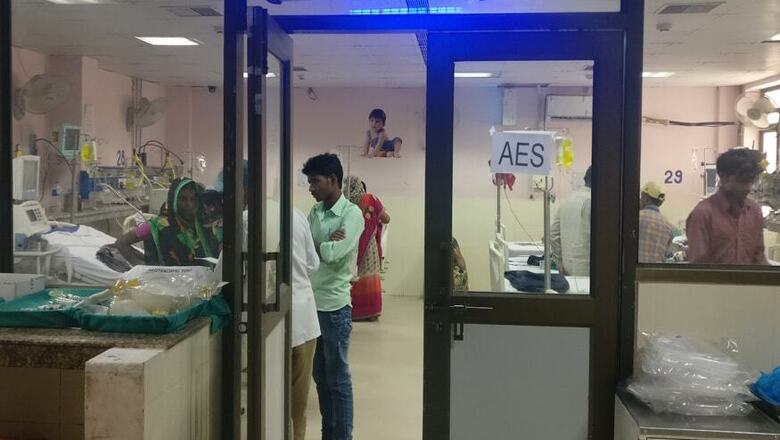
views
New Delhi: The government argues that Ayushman Bharat-Pradhan Mantri Jan Arogya Yojana (PM-JAY), the largest government health insurance initiative in the world entitling 10.74 crore families to an annual health cover of Rs 5 lakh, will transform Indian healthcare.
But in order to do so, it will have to address a series of challenges in 2019, ranging from rationalisation of rates to ensure participation of private hospital to strengthening India’s crumbling primary healthcare infrastructure. And it will have to do so fast.
Within the first three months of its launch, more than six lakh people availed treatment under the Ayushman Bharat-Pradhan Mantri Jan Arogya Yojana (PM-JAY). The scheme, now a key arsenal in the BJP’s pitch for re-election ahead of the Lok Sabha in 2019, has so far provided secondary and tertiary care benefits worth over Rs 800 crore to beneficiaries across the country through a network of 16,000 hospitals that have empaneled or are in the process of being empaneled under the scheme.
But as the four-month-old scheme enters 2019, the stakes couldn’t be higher.
India is at the centre of a dangerous and rapid epidemiological transition, one that many experts believe it is ill-equipped to deal with.
Ischaemic heart disease is the leading individual cause of disease burden in India and the contribution of cardiovascular disease to total deaths has almost doubled since 1990. The country remains engulfed in an epidemic of non-communicable diseases while it is also staring at an unprecedented and largely unacknowledged mental health crisis.
Strengthening primary healthcare
Primary healthcare remains the foundation of any country’s healthcare mechanisms. Global experiences have repeatedly reiterated that an investment on primary healthcare has a direct correlation in better health outcomes.
Under the scheme, this will be in the form of health and wellness centres that aim to provide outpatient care, immunisation, maternal and child health services among others. But critics have pointed out that without a restructuring of the existing network of primary and community health care centres — often crippled by staff shortage and crumbling equipment — the centres might well be short of what is required.
Moreover, the government aims to create 1,50,000 centres. But, as per economic experts, the scheme and the money allocated for it implies that a mere Rs 80,000 has been allocated for each such centre.
Will companies pay up?
Months before Ayushman Bharat was launched, Delhi health minister Satyender Jain had proposed a similar scheme that looked to create a state government health insurance initiative. The proposal was eventually turned down, in favour of strengthening primary healthcare in mohalla clinics. An official explained, “It was felt that getting insurance companies to pay could be a potential nightmare.”
Delhi is yet to join the scheme and its reasons, the BJP claims, are decidedly political. But those initial fears aren’t without basis. A study by the National Institute of Public Finance and Policy, an autonomous body under the union government, found that individual buyers of health insurance are the worst off in India, particularly if they bought it from private or stand-along health insurance companies. The greatest obstacle, the study found, was to get companies to pay up when cover was needed.
The study found that India topped the ignominious list of complaint rates in the sector, a clear indication of poor quality of services and worse regulation. It concluded, “It may be the case that with such poor levels of consumer protection, households which purchase basic financial products, like health insurance, are worse off than households which do not.”
The Union Government has, however, maintained that it has safeguards in place to prevent such as ‘unscrupulous’ practices. An official said, “This is something that we will be very vigilant towards. The ultimate aim is that of universal healthcare and nothing must come in the way of that.”
The question of data
The question of whether the scheme would adequately be able to offer quality health services to India’s most poor and vulnerable might end up depending on a question of data.
A key factor, all stakeholders agree, will be the pricing of various procedures that the scheme covers and this will, in turn, depend on regular data. In other words, it will be essential to calculate the odds of a patient adopting a certain procedure in a certain district so that the insurer also has an idea of the disease burden in India.
But the problem in India remains that such data simply doesn’t exist. Gross under reporting of illness in poorer areas plagues the country. Ares where per capital health expenditure is high and infant mortality rates are low tend to indicate a higher proportion of persons reporting ailments.
In other words, the existing data simply can’t be trusted.
Private hospitals shying away from empanelment
Three months since the launch, private hospitals in Bhopal became the latest to shy away from empanelment. The MP Nursing Home Association, Bhopal chapter explained that the package rates for “medical and surgical interventions” were too low. In Bhopal alone, a dozen or so of the total 200 private hospitals have so far empanelled in a state where the scheme targets nearly 80% of its population.
The situation is not much better elsewhere. In Delhi, for instance, only three of 900 private hospitals have enrolled in the scheme.
The prime reason for this remains that the rates, private hospitals claim, are unscientific and not in sync. So for a hysterectomy, while Tamil Nadu charges Rs 34,000, Telangana charges Rs 62,000. The Ayushman Bharat package pegs the amount at Rs 20,000, which they argue have been drawn up unscientifically. Private hospitals argue that the rates are simply too low for them to be a part of the scheme.




















Comments
0 comment